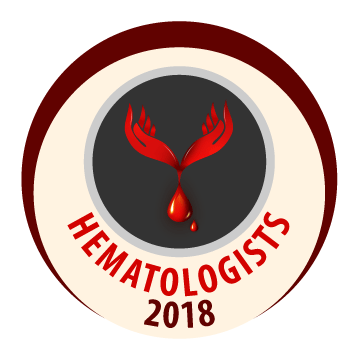
Nahla Osman
Menoufia University, Egypt
Title: Higher mTOR mRNA is associated with poor outcome in AML patients
Biography
Biography: Nahla Osman
Abstract
Introduction: Acute myeloid leukemia (AML) is increasingly recognized as a heterogeneous group of disorders that shows considerable variation in behavior and outcome which, in a significant proportion of patients, is far from satisfaction. Aberrant expression of genes involved in cell proliferation and survival is implicated in pathogenesis of AML. mTOR is a downstream effector of PI3K/AKT pathway which play critical roles in homeostasis of hematopoietic cells. The aim of this work was to study mTOR expression in AML patients and to assess its relation to disease characteristics and outcome.
Patients & Methods: mTOR expression was measured in 50 patients with primary AML using real-time quantitative polymerase chain reaction.
Results & Conclusion: mTOR expression was significantly higher in AML patients with poor risk disease (no=16, 18.64±19.44) compared to those with intermediate risk (6.05±5.04, p=0.02) or favorable risk (no=11, 3.85±2.44, p=0.02). There was no significant difference in mTOR expression between favorable and intermediate risk group (p 0.068). mTOR expression predicted the response to initial chemotherapy in each of the intermediate and poor risk groups as levels were significantly higher in the group that failed to achieve complete remission (CR) compared to those who were in CR after initial chemotherapy (9.06±4.6 vs. 3.86±2.35, p<0.001 for the intermediate risk group and 17.16±12.99 vs. 4.11±3.01, p=0.011 for the poor risk group). In addition, mTOR mRNA level was significantly higher in the non-CR group compared to the CR group in the subgroup with wild FLT3 gene (no=31, 13.56±16.73 vs. 3.66±2.47, p=0.001) and in those who harbored the mutant allele (no=19, 18.40±15.76 vs. 4.02±2.66, p=0.005). Interestingly, mTOR expression was significantly higher in patients with normal karyotype (no=39) who failed to respond to initial therapy (15.93±13.37) compared to those who achieved CR (3.93±2.45, p<0.0001). Receiveroperator characteristic (ROC) curve identified the 5.2 as the best cut off that predicted the response in our patients as higher levels were associated with failure to achieve CR in all patients and in subgroups with wild or mutant FLT3 and in the subgroup with normal cytogenetics. Higher mTOR expression correlated with poor overall survival in both CR and non-CR groups, r=- 0.437 and -0.531, p=0.016 and 0.019 respectively. Our data showed higher mTOR expression as a marker of poor outcome and, thus, can be a useful tool in risk stratification of AML patients.

